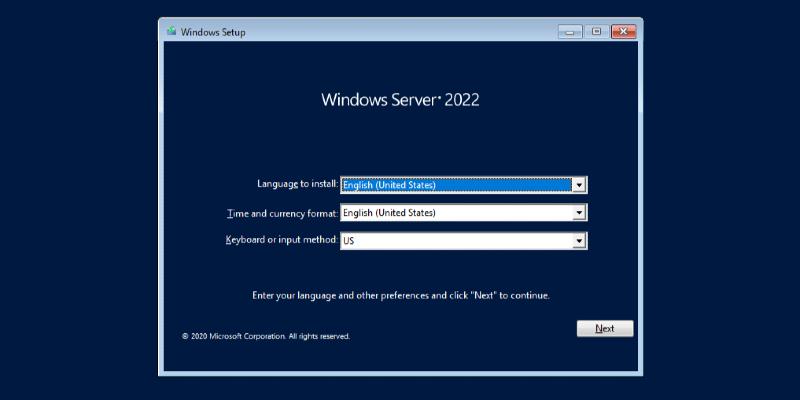Microsoft has released Windows Server Preview Build 22463.
Announcing Windows Server Preview Build 22463
Hello Windows Insiders!
Today we are pleased to release the first new build of the next Windows Server Long-Term Servicing Channel (LTSC) Preview that contains both the Desktop Experience and Server Core installation options for Datacenter and Standard editions. Branding has not yet been updated and remains as Windows Server 2022 in this preview - when reporting issues please refer to "VNext" rather than Windows Server 2022 which is currently in market.
What's New
Storage Replica Performance Upgrade
Storage Replica has been around since Windows Server 2016 and will now be given an option of a performance upgrade. The current configuration of log drives being formatted with a file system will remain and continue to work; however, to get the upgrade in performance a change must be made. For better performance, log drives will still be a GUID Partition Table (GPT) disk partition but there will be no file system on it. In other words, it will be a RAW drive type.
There will be no change in the way the replica groups and partnerships are created. The only change will be a new parameter. This new parameter will be in New-SRGroup and called “-LogType”. With the new parameter comes the different switch values that it can accept:
- FileBased : will be the default value and is the current method
- Raw : The new upgraded performance update
All other commands and steps will remain the same. These changes are not in Windows Admin Center at this time and will be added at a later date. There is not a way of changing or “upgrading” on the fly between the current FileBased and the new Raw logs. If there is an existing partnership, it must be removed both from partnership and group to be recreated. Data drives (source an destination) can remain the same, but ensure that both are replicated and up to date with each other so that there is minimal to do once the new group and partnership are established.
At this time, the only replication scenario at this time for the new Raw log type will be supported is Server-to-Server replication. Cluster-to-Cluster and Stretch Cluster will be coming in later builds. We will need as much testing as possible to ensure that Storage Replica is just as stable and reliable in the new version.
Any feedback that you may have can be sent to SRFEED@Microsoft.com. If you are getting higher performance, let us know and let us know how much of an increase it is, we welcome as much as we can get.
SMB Compression behavior change
We first introduced SMB compression in Windows Server 2022 & Windows 11. SMB compression allows an administrator, user or application to request compression of files as they transfer over the network. This removes the need to first manually deflate a file with an application, copy it, then inflate on the destination computer. Compressed files will consume less network bandwidth and take less time to transfer, at the cost of slightly increased CPU usage during transfers.
Based on testing and analysis, we have changed the default behavior of compression. Previously, the SMB compression decision algorithm would attempt to compress the first 524,288,000 bytes (500MiB) of a file during transfer and track that at least 104,857,600 bytes (100MiB) compressed within that 500-MB range. If fewer than 100 MiB were compressible, SMB compression stopped trying to compress the rest of the file. If at least 100 MiB compressed, SMB compression attempted to compress the rest of the file. This meant that very large files with compressible data - for instance, a multi-gigabyte virtual machine disk - were likely to compress but a relatively small file - even a very compressible one - would not compress.
Starting with this build, we will no longer use this decision algorithm by default. Instead, if compression is requested, we will always attempt to compress. If you wish to modify this new behavior to return to a decision algorithm, review Understanding and controlling compression behaviors.
Please use the Feedback Hub tool on Windows 10 or Windows 11 to give feedback or report issues with SMB compression, using the "Files, Folders, and Online Storage" \ "File Sharing" category. See We Value Your Feedback section below for more information on feedback options.
Announcing Windows Server Preview Build 22463

